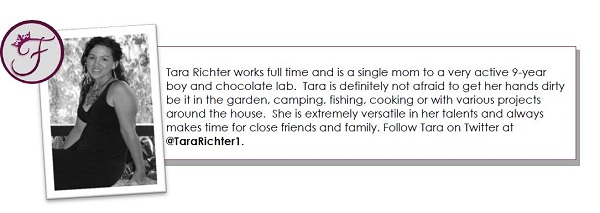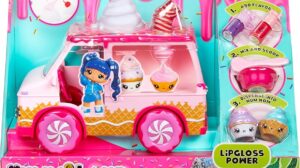
By Tara Richter…
My mouth is already salivating as I write this thinking about canning my famous salty dill pickles and beans – or at least they are famous amongst my friends and family. Canning isn’t just for grandmothers anymore; the ‘art’ (or more so the science) of canning is making resurgence amongst younger generations.
I wanted to learn how to can so that I could continue the tradition of food preservation, not out of necessity like my ancestors, but mostly so I could say that I knew how to do it, and of course for the proud satisfaction of having “made” my own pickles, jams, jellies and fruit preserves. There were a quite a few tricks that my mom taught me for canning success (like how to fit all those little cucumbers in a jar).
I was surprised, however, in reading up from Bernardin’s website and Berardin’s Guide to Home Preserving, that many of the “old ways” from my mom’s and grandmother’s time, are not only outdated, but dangerous (i.e. food toxicity & food poisoning due to improper processing). Informing my mom of these modern day rules for home canning, I had to laugh at the response of “well none of us died years ago”. While that may be true for my mom’s family fortunately, others were not so lucky.
With the right tools and techniques, canning really is a simple process to preserve your garden or farmer’s market produce. The information provided on Bernardin’s website is truly outstanding! There is even a fantastic step-by-step guide (available for a free download) that serves as a great basis for canning. While this list is by no means exhaustive, here are a few of my own tips for successful canning!
1. Set Yourself up for Success
Having the right gear is essential in making your canning experience a positive one. While there are dozens of accessories available for canning, I find the contents included in the Home Canning Starter Kit to be the basic essentials of what you need. You might be surprised how handy a magnetic lid lifter, wide-mouth funnel, bubble remover and jar lifter can really be. This set also comes complete with a 21-quart canner, a DVD, jars/lids, pectin, recipe book and more! This kit is also great if you’re looking for upgrading your own equipment. My mom passed down to me her Bernardin canner (that is older than me even), and while it still works just fine and a true testament to the quality of Bernardin, the metal rack inside is rusting away.
2. Keep it Clean
They say cleanliness is next to godliness, and it’s also essential for safe canning practice. Everything must be clean for canning, from the jars and lids, to the fruits & vegetables. Failure to start with clean gear may result in food spoilage or improper seals, which can have serious consequence/illness. After washing with warm soapy water, the best way to prepare the jars is simply to submerge them in the canner full of boiling water. The lids can be placed into a pot of boiling water for the same result (and this is where that little magnetic lid lifter is extremely
valuable).
3. Know your food’s acidity
Not all food is canned the same way. The manner in which food is processed depends on its acidity and also altitude. High acid foods (ph of 4.6 or lower) include fruit, jams, jellies and fruit spreads. Some foods like figs and tomatoes are on the borderline and require acidification (adding of acid like vinegar). Other foods where vinegar is added such as sauerkraut, pickles, relishes etc. are also considered high acid. On the contrary, low acid foods (ph 4.6 or higher) include some vegetables, meats, poultry, seafood, soups, stews, tomato-vegetable mixes, tomato-meat mixes etc. These foods must be processed in a special canner called a Pressure Canner. This type heats food to temperatures of 240F to prevent growth of spoilage organisms that lead to botulism, which is a deadly form of food poisoning.
4. Sugar and Spice and Everything Nice
There are hundreds of canning recipes and variations upon variations. For a beginner, the best is to start with a basic recipe with something like fruit or jam. As you become more familiar with the canning process, you will be able to experiment with all sorts of additions to your jars. Perhaps you’ll want a reduced sugar or no-sugar added variety to your jam, or (as is my favorite) adding a red-hot chili and loads of garlic to compliment salty pickles. The possible combinations are really endless. Be sure to check out Bernardin’s website for some really great recipes!
5. Heat Processing
Processing is the most vital (an non-optional) step in canning. This step is essential to create the proper vacuum seal for food safety, taste and quality. Failure to process adequately or properly can lead to food spoilage and very serious health risks. The step of processing is dependent on a number of key factors including how the jars are packed, removal of air bubbles, the application of lids & bands, the headspace in the jar, and the boiling of water surrounding the jars. Depending on the food, altitude, or the particular recipe followed, there may be a number of variations in the manner in which the jars are processed. Therefore it is essential to be familiar with the heat-processing step, and to follow the important instructions in the recipe. For more information on heat processing visit the Bernardin website. After 24-hours It is of course imperative to test the seal on the jars. The telling “pop” sound of the lid being sucked downward into the jar is one sure way to know the seal is a good one, or simply pressing on the top of the lid. If there is no movement/give the jar is sealed; if not, the contents should be reprocessed immediately or refrigerated.
Of course the most important step is to have fun and be creative with your home canning!
Inspired? Eager to give it a try yourself? You can purchase the Bernardin products at mass retailers across Canada, major grocery stores and specialty food and garden retailers. And, you can enter to WIN a Bernardin Home Canning Starter Kit here!









My grandmothers red pepper jelly or my grandfathers spicy pickled beans! 🙂
My mother in law makes the best Lady Ashburn pickles. I put them on top of mashed potatoes and its so good!
My grandmas pickled carrots & raspberry jam
Spicy peach salsa
i love beets and pickles.
pickled beets, or peaches
Mustard pickles
Fresh raspberry jam is my favorite
We love making all types of jams and jellies, bread and butter pickles and pickled beets.
beet relish my mom used to make it all the time, its delicious
My mom use to can peaches when we were young (my favourites) ….we would help . I would love looking at the cellar full of peaches and pickles and beets.
My dad’s dill pickles!
I am known for my spicy pickled asparagus ! Great addition to. A Caesar cocktail.
Quick dill pickles!
Strawberry jam
pickled beets
pickled beets
pickles.
sweet cucumber slices and red onions
Raspberry Jam!
For me it would be pickled beets and also canned peaches or peach jam.
It’s strawberry jam. Great on toast and on ice cream.
blackberry jam and canned pears
I love my moms homemade pickled beets!
my moms apple butter!
mom preserves so many awesome things but the peaches are my favorite
Asparagus!!
I just learned how to can via pinterest and YouTube. I want to small batch can for the rest of my life. This starter kit will do wonders for my world. Thank you so much for the giveaway.
I love canned tomato sauce.
bottled beets.,.hmm love them!!!
I love my mom’s chili sauce and I sure miss my grandmothers bread and butter pickles, my all time favourite is pickled asparagus, mmm
my spaghetti sauce I did 90 jars last year
I definitely love dill pickles the best.
Canned peaches! We (my mom and I) can them together every year.
My favourite is pickled beets.
my moms mustard pickles
Pickled beets!!
Peaches and pears are my favourite canned foods! Yummy!
My mom and I make our own raspberry jam every year, and that is my favourite canned item. I also love pickled beans.
I would like to make my own cranberry sauce for Christmas!
My favorite canned item is pickled beets.
Pickles for me!
I love pickled eggs, my grandmother made them for us as kids and I still love them to this day!
jalapeno jelly!
My favourite recipe to can is Raspberry Jam.
I would make strawberry jam and million dollar relish which is so good on burgers..
I love my own zucchini relish!
I once made this kiwi jam that was awesome, but I lost the recipe. It was my favourite and I’ll have to find the recipe again!
Dill pickles for sure
Beets. Messy but yummy!
I love canned tomatoes. They make the best sauces.
I like homemade strawberry jam
thanks
I would love to can pickled lemons!
I love dill pickles but I also make a wicked strawberry rhubarb jam.
Strawberry jam!
Strawberry rhubarb jam
mine is chow chow
pickled green beans
I used to can when I had my garden. Miss it so much. I still make jams and jellies and give them away as presents.
Strawberry Jam
I love jellies. The last time I made grape jelly I used the juicer to extract the juice and filter out the seeds. Very yummy.
Pickles – my sister and my daughter can them!
any kind of homemade jam- can’t beat that fresh taste
Nothing beats spicy dill pickles for me, although salsa is a very close second!
So many memories growing up of canning food for the winter – we had a HUGE garden and canned/froze all of our winter supply. My favourite one to make was relish. My mom would pick all the veggies we needed in the morning to make it and we would turn the crank on the mincer until it was all minced and ready for her when she got home from work to process into jars.
Favorite canned item is pickled garlic. Although garlic dill picles are a close second.
My mom always made mustard beans, I would too if i had a canning kit.